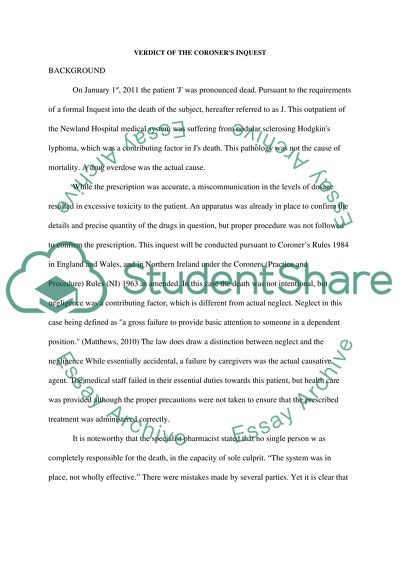Cite this document
(“Verdict Of The Coroner's Inquest Essay Example | Topics and Well Written Essays - 2000 words”, n.d.)
Retrieved from https://studentshare.org/medical-science/1394086-coroner-law-please-see-the-order-instruction-below
Retrieved from https://studentshare.org/medical-science/1394086-coroner-law-please-see-the-order-instruction-below
(Verdict Of The Coroner'S Inquest Essay Example | Topics and Well Written Essays - 2000 Words)
https://studentshare.org/medical-science/1394086-coroner-law-please-see-the-order-instruction-below.
https://studentshare.org/medical-science/1394086-coroner-law-please-see-the-order-instruction-below.
“Verdict Of The Coroner'S Inquest Essay Example | Topics and Well Written Essays - 2000 Words”, n.d. https://studentshare.org/medical-science/1394086-coroner-law-please-see-the-order-instruction-below.


